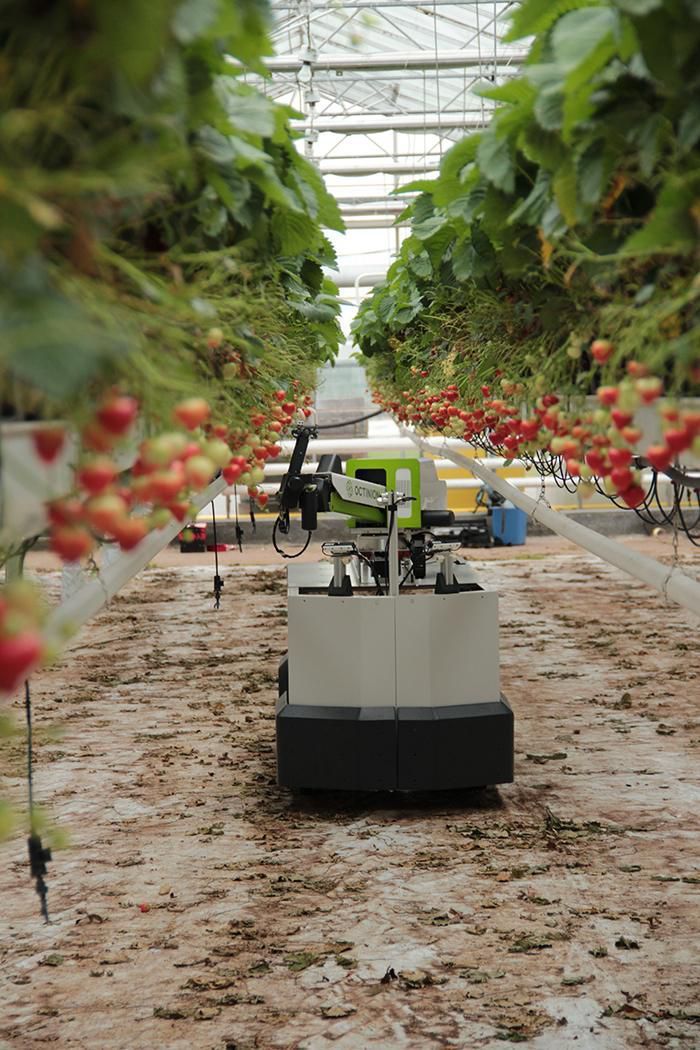highlighting the ways in which cutting-edge technology is causing a sea change in conventional agricultural methods, opening the door to a brighter, more sustainable future.
- Agricultural Innovation: Overcoming Modern Farming’s Obstacles:
In this part, we will examine the need for invention in light of the difficulties encountered in contemporary farming. The significance of using cutting-edge technology to boost agricultural output is highlighted by factors including rising populations, changing weather patterns, and limited resources. - Highly-Specific Methods for Achieving Optimal Crop Management with Precision Agriculture:
This section explores the idea of applying technology to maximize crop management, which is an important part of precision agriculture. Higher yields and more efficient use of resources are the outcomes of farmers’ use of sensors, drones, and statistical analytics to make educated choices on irrigation, fertilization, and insect management.
The Fourth Industrial Revolution in Farm Machinery: How Drones and Robots Are Changing the Game:
Moving on to autonomous agricultural equipment, this part delves into the increasing use of drones and robots for a variety of field jobs. Automation, in the form of autonomous tractors and aerial drones for crop monitoring, increases efficiency while decreasing the need for human labor.
Internet of Things (IoT) and Smart Sensors in Agriculture: Continuous Tracking for Data-Driven Decisions:
This section delves into the ways in which smart sensors & the IoT are revolutionizing agriculture via the collecting and monitoring of data in real-time. In order to help farmers make better decisions, smart sensors are being placed in farms and on equipment.
Redefining Crop Cultivation: Vertical Farming & Controlled-Environment Agriculture
In this part, we will look at how technologies like vertical farming or controlled-environment agriculture are changing the face of conventional crop production. Farmers may cut their water consumption and environmental effect while producing crops year-round in regulated indoor conditions.
Robots for Crop Harvesting: Making the Process Automated: 7.
Here we take a look at the automation of a very labor-intensive agricultural task—crop harvesting—through robots. When it comes to harvesting crops, robotic devices with superior vision and manipulation skills are the way to go.
- Using AI and ML to Improve Crop Yield Predictions:
Here we talk about artificial intelligence and machine learning and how they improve crop forecast models. To aid farmers in optimizing their operations, AI-driven algorithms analyze weather patterns, historical data, and other criteria to provide precise production projections. - The Importance of Blockchain Technology for Agriculture: Promoting Openness and Trackability
In this part, we will take a look at blockchain technology and see how it may be used in the agricultural sector. Blockchain technology makes the supply chain more transparent and traceable, which benefits customers by letting them know where their food came from, making it easier to verify its authenticity, and building confidence in the agricultural ecosystem.

- The Use of Drones in Agriculture for Surveillance and Monitoring: Airborne Data for Accurate Farming:
Now let’s talk about agricultural drones and how they help with monitoring and surveillance. Drones with sensors and cameras provide farmers a bird’s-eye view of their crops, letting them spot insect infestations, nutritional deficits, and illnesses much more quickly. - Obstacles to Agricultural Automation and Their Overcoming:
This section addresses the difficulties that have prevented agricultural automation from being widely used. Successful implementation requires joint efforts to overcome challenges such as early investment costs, technical literacy, and addresses issues connected to employment displacement. - Eco-Friendly Farming Methods: Coordinating Mechanization with Social and Environmental Duty:
The significance of striking a balance between automation and environmental responsibility is highlighted in this section, which focuses on sustainability. When used in tandem with automation, sustainable agricultural techniques help save resources, lessen negative effects on the environment, and ensure the industry’s continued success. - Looking Ahead: Predicting the Agrarian Revolution:
Finally, the part on trends for the future looks forward to the next big thing in agricultural innovation. Robotics improvements, AI-driven solution integration, and precision farming’s ongoing progress are all factors that will shape automated agriculture’s future.
